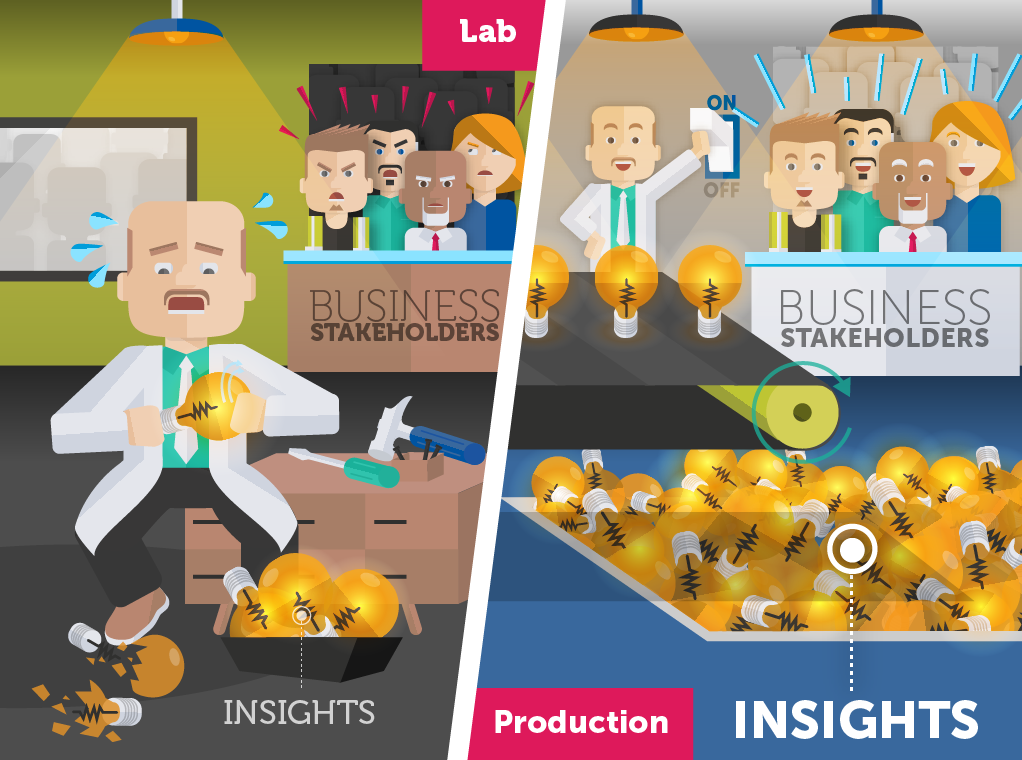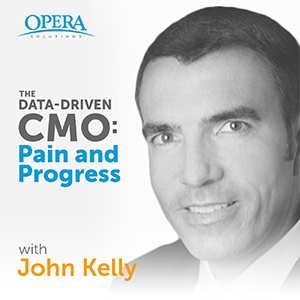Michael Jahrer, VP of applied machine learning at Opera Solutions, proves his data science mettle by using deep learning to predict who will be a safe driver in the year ahead.
Porto Seguro, the third-largest insurance company in Brazil, set out to improve its predictions of who would file an insurance claim in the next year. The company sponsored a competition through Kaggle, the premier platform for predictive modeling and analytics competitions, and our own Michael Jahrer, VP of applied machine learning, took home the win.
Opera Solutions Wins First Place in Kaggle Competition
Topics: Data Science, Machine Learning, Analytics, Artificial Intelligence
Decreased Attention Spans: A New Reason to Perfect Personalization
Online shoppers are getting antsy. They’re spending less time thinking about purchases before buying — or leaving a site — and drastically shrinking marketers’ opportunity time. We explore the latest trends in online personalization — and how to keep up.
We spend a lot of time talking about personalization in marketing. That’s because it’s both the most profitable way for our customers to leverage artificial intelligence and the most challenging. A new paper by Seth Earley, published in IEEE’s November/December issue of IT Professional, lays out some of these challenges and addresses how best to overcome them.“AI-Driven Analytics at Scale: The Personalization Problem” touches on many of the issues our customers face every day, including maximizing data scientists’ time, developing use cases in a timely fashion, and even using a Signal Layer to help expedite the process. It also cites a new study that examines exactly how much time companies must apply their personalization insights in a real-time setting.
Topics: Big Data, Analytics, Marketing, Artificial Intelligence
Managers and executives at all levels are now expected to be at least familiar with how machine learning models are built and deployed. However, if you don’t have a formal data science education, reading through industry publications is not very helpful: High-level use case descriptions and marketing materials too often present machine learning as somewhat of a dark magic powering their products; technical publications tend to be incomprehensible for a nonspecialist, and how-to guides simply list the steps without giving sufficient background as to why each step is needed, which limits understanding.
Topics: Big Data, Machine Learning, Analytics
Get More Mileage Out of Your Third-Party Data
Here at Opera Solutions, we often refer to data equity, which we define as not just the amount of data you have, but also the ability to derive value from it. And to get value from your data, you need to ensure it is high quality. But how? Knowing the answer could make the difference between data equity and data bust.
Topics: Big Data, Signal Hub Technologies, Analytics, Data Equity
Shopping around for a Big Data analytics solution is a daunting task for anyone. But for those who are somewhat familiar with data science, a common area of misunderstanding — and underestimating — is clustering techniques. Whether the assumption is that all clustering techniques are created equal or that a company needs only one or two clustering techniques, business buyers are often left scratching their heads. The fact is several types of clustering techniques exist — each with its own strengths and weaknesses — and companies need access to a variety of techniques to accomplish optimal results.
Topics: Big Data, Data Science, Analytics
The Data-Driven CMO: Opera Solutions Announces New Podcast Series
Opera Solutions is pleased to announce its new podcast series, the Data-Driven CMO. With an increasing focus on technology and Big Data, the marketing profession must rapidly learn how to use such technologies as predictive analytics, machine learning, and artificial intelligence.
At Opera Solutions, we have helped several global companies transform their marketing using our predictive analytics software. However, technology and products are only part of the story, and we wanted to bring the organizational and human perspective on this transformative shift to light. Our new podcast series opens the discourse through direct conversations with some of the most technically adept marketing leaders.
Analysis Paralysis — How to Turn Big Data into Profits
As the amount of data accumulated by businesses continues to grow, one of the often confounding questions asked is “How do we turn it into insights and then profits?” Sooner or later, most businesses find themselves confronted with analysis paralysis and become unable to extract meaningful insights or monetary value from the data that should be fueling their growth.
A guide from the head of HR at a leading analytics company
Data scientists are in higher demand than ever before. According to the latest CrowdFlower survey, 79% of respondents reported a data scientist shortage in 2015. In 2016, that number grew to 83%. The race is on to find skilled people who can organize, structure, and make business sense out of Big Data sets. People with heavy STEM, analytics, and conceptual skills, and the attendant work-friendly personality traits (insatiable curiosity, ability to prioritize, and a healthy dose of skepticism, to name a few), can virtually write their own tickets.
Topics: Big Data, Data Science, Analytics
How to Transform Marketing with the Membership Economy and Advanced Analytics
Everyone wants to belong. But how can that basic human need coexist with the commercial needs of a business so that both the customer and the business find the relationship beneficial? Big Data analytics makes it possible while also opening new possibilities.
History is replete with examples of human beings finding ways to connect with one another. We form tribes, congregations, clubs, and entire societies. We develop communications channels and pass specialized content through those channels. Even efforts to divide these groups and disrupt these channels simply engender new ones and actually help strengthen our identity as individuals. This pattern has continued to evolve with the advent of the digital age and extends to peoples’ relationships with products and services. Are you loyal to Mac or PC? Do you use Facebook or Instagram? Are you enrolled in Amazon Prime? Are you a Netflix subscriber? This need to identify one’s self with a larger group is a primal human instinct no matter how contemporary the group.
CLV and Clumpy Customers: Why Clumpy Behavior Is Changing the Customer Lifetime Value Equation
Calculating customer lifetime value has been a critical part of the marketing process for years, but new technologies are changing consumer behavior, and marketing professionals need to catch up.
Ever have a weekend where you just can’t stop spending money? Maybe you’re using some free time to stock up, or you’re decorating a room or planning a party. Or maybe you’re not spending more but just consuming more — a good television or movie series or, for example, plowing through a good book on your Kindle. This kind of behavior is called “clumpiness.” And while it’s not necessarily new, new technologies — particularly in the world of digital content — have shed light on this type of behavior for all industries. The problem is that it hasn’t been included in the formula marketers have been using for decades.
Topics: Signal Hub Technologies, Analytics, Marketing












